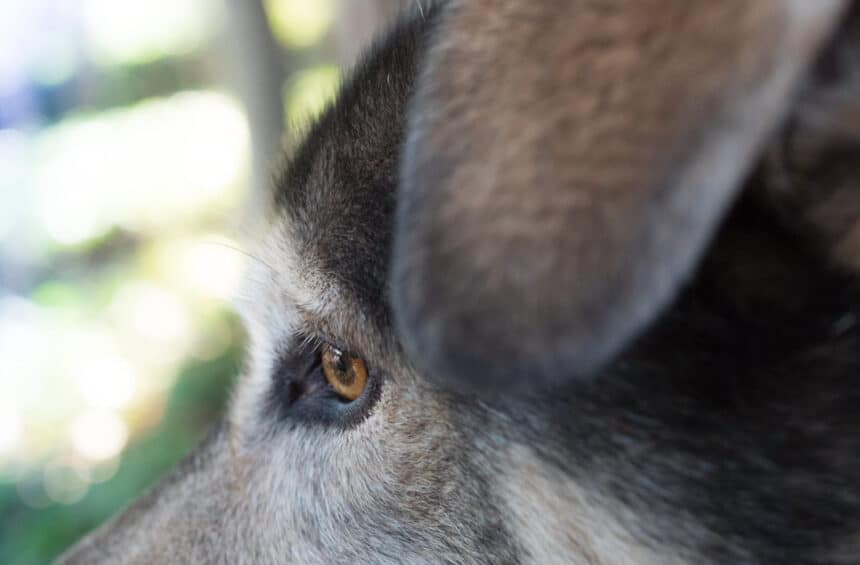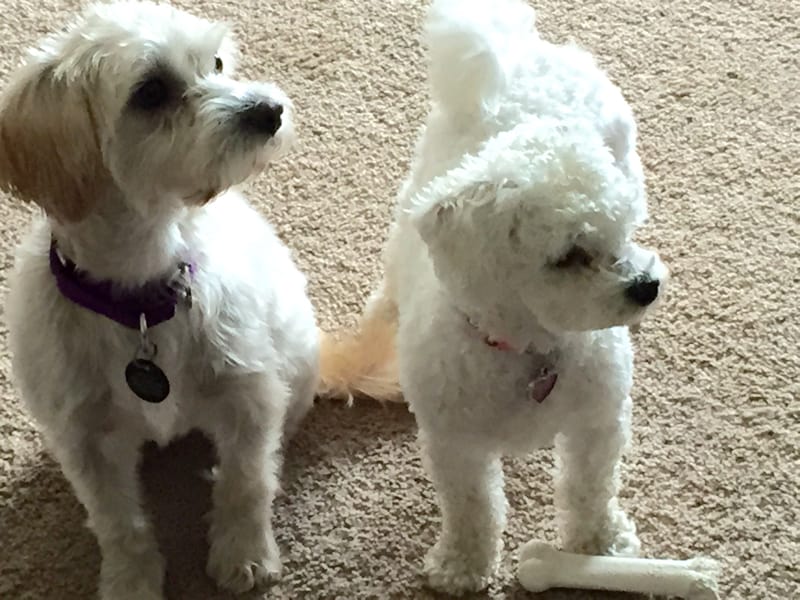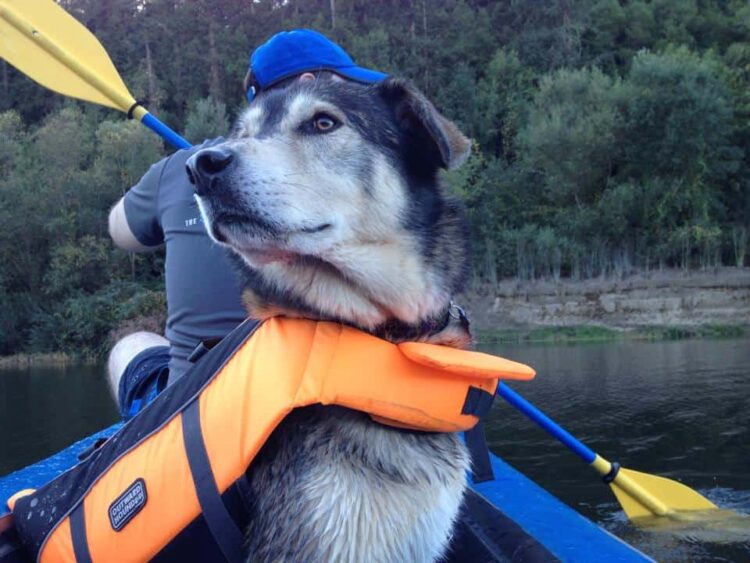How to Adopt an Animal from a Shelter—And Is It Right For You?


How exciting! You’ve decided to adopt an animal from a shelter, but how do you choose the best one for you and your family? There are many things to consider before bringing that adorable companion animal home, and I will share my experiences volunteering at animal shelters and adopting my newest family member, Minnie! This list will help you find a perfectly suited animal to make sure you, those you live with, and your newest family member will be happy.
What to Consider Before Adopting An Animal
If you’re anything like me, you will be tempted to adopt the first cute animal who catches your eye, however, there are a few things to consider before you sign on the dotted line and bring Fluffy home. Before you do, consider the following.
1. Time
How much time can you dedicate to caring for your new companion? How long will he have to be left alone on a daily basis? If you work long hours and your companion will have to be left alone for prolonged periods of time, a dog is probably not the best choice for you (consider adopting a cat instead!). Typically, a dog will need to taken outside to urinate 3-5 times per day, and will often go number two after he eats. Dogs need daily exercise and attention, and may experience separation anxiety if they’re left alone for too long. Cats, however, are far more independent and can be trained to use a litter box, so long days away from home shouldn’t pose any problems.
2. Your Living Situation
It is important to consider your living situation. Do you live in an apartment or a house with a backyard? If you live in a small apartment, large dogs will not have much room to exercise, meaning you’ll need to take them on frequent long walks to release their energy. Small dogs can make the most of a small space, and can enjoy a game of fetch indoors. A cat can also have a happy life in small apartments.
A house with a fenced backyard can be great for just about any sized dog, just make sure that the fence is tall enough for high jumpers, and that there are no holes in it or under it, because dogs can be incredible escape artists.
Do you live with roommates or a partner? If so, it is important to be on the same page when you’re considering adopting a little fur ball. Ask them about their comfortability around certain animals, and how involved they are willing to be in the care of the new house mate.
3. Animal Allergies
Do you or any of your family members have animal allergies? If so, try to be sensitive to that. There are many “hypoallergenic” breeds out there, and if you do proper research, you can surely find one at a shelter. I did! Plus, there are many breed-specific rescue groups with dogs who need a home. You can always ask your local shelter to notify you when dogs that don’t shed come in.
Keep in mind that no dog is going to be 100 percent allergen free. All dogs and cats produce dander, the primary cause of allergic reactions. Allergies can also be due to proteins found in pet saliva. Here is more information about how allergy sufferers can adopt a dog as well as a list of hypoallergenic friendly breeds.
4. Do You Have Kids?
Do you have children? If you have young children at home, you need to consider the safety of both your child and the animal. Some animals are uncomfortable with children, protective, or food-aggressive, while others are incredibly tolerant of the smothering, prodding and poking that can often be a child’s way of showing love. Try to really get to know a dog by spending a lot of time with him or her (with your kids) before you adopt.
Animals in shelters are often sleep deprived, stressed out, and do not receive adequate exercise, so their behavior in the shelter could be far different from their behavior in a loving home. Many shelters will allow you to bring an animal home for a “trial” period to make sure they are a good fit with your family. If you have concerns, most shelters have trainers or behaviorists that can help prevent unwanted behaviors, or suggest an animal that would be better suited for you.
5. Other Pets at Home
Do you already have animals at home? Consider the temperament of your animals and the temperament of the potential adoptee. Often dogs of the same sex will not get along as well. In particular, two females may struggle to get along, especially if there is a considerable difference in age or temperament between the two. Some behaviors to look out for are aggression and resource guarding (being particularly possessive of water, food, or toys). Most shelters will make you aware of these behaviors before the animal is released to you. Check out this link from the ASPCA that lists and explains the forms and signs of aggression.
6. Keep An Open Mind
You may have your heart set on a certain breed or age for your new pet, but you may be surprised to find a friendly mutt that’s as smart as can be, or an older dog that will make a loyal best friend. When visiting the shelter, keep an open mind and an open heart. All of the pets there need loving homes!
Now What? How Do I Adopt An Animal?
Ok, so you’ve found an animal who seems like a good match. Now what? The first thing you should do is get some background information about him. Find out why he was brought to the shelter and if he has any known behavioral or medical issues. These issues do not necessarily rule out the possibility of adoption, but they may mean additional costs for medications or surgeries, or additional time commitments to house train, etc., so these are helpful questions to ask as you assess a potential adoptee.
Once you’ve gotten your questions answered, introduce yourself to the pet by approaching the kennel from the side, without making eye contact, to avoid appearing as a threat. It is a good sign if the dog watches you and is curious, or walks up to you to say hello.
Now, go take a stroll!
While you’re out, take note of his natural personality. Is he playful? Does he seem scared of other people or dogs? Keep in mind that the time the dog has spent in the shelter may have decreased positive behaviors or amplified shyness or aggression. You should get a good feel of his natural temperament, which may require additional time with him. If possible, ask to have some 1:1 time with your new furry friend in an area that is away from other people, animals, and distractions.
Meet-And-Greet Your Future Companion Animal
Once you’ve fallen in love with a dog, the shelter should arrange a meet-and-greet between your pets (if you have any) and the potential adoptee. It is extremely important that all pets remain leashed until the shelter employee says that they are ready to meet off the leash. Pay careful attention to how the animals interact with each other. Look for signs of aggression, dominance, or resource guarding. Ideally, both pets should be curious about one another and say hello by the traditional dog butt sniffing.
If all goes well, prepare to bring your new best friend home! To help ease any stress and to help him feel at home, put out a water bowl, a toy or two, and a dog bed or pillow. If you already have pets, put them in a separate room before your new dog gets there, so he has an opportunity to sniff around the place for about 30 minutes, without the added commotion of another animal. Your previous animals may also become territorial, so you must keep both animals on the leash until you are sure that they will not become aggressive. Do not leave your animals alone together until they have shown that they can get along unsupervised.
What If My Animals Don’t Get Along?
Don’t despair if it seems like your animals don’t get along right away. Your new companion may take considerable time to get comfortable with you, your other pets, and his new environment, especially if he has dealt with an unstable living situation before being adopted. Typically, dogs of the opposite sex, that are relatively close in age, and those who are spayed/neutered will get along the best, but there are exceptions. Check out this Link for possible behaviors that may occur between your dogs, and how to remedy them.
I followed these steps when I found a 2 year-old, Poodle/Shih Tzu mix at a shelter near me (aww, just look at her!).

She had just been transferred to the shelter that day, and was not yet ready for adoption. The shelter staff told me that she was given up because her owners spent too much time out of the house, so they could not give her the care and attention that she needed. Before she was able to be adopted, Minnie needed to go through required behavioral and medical screenings, and I made sure to put in an adoption application for her while those were being done. I visited with Minnie two times to get to know her (to be honest, I already thought of her as part of my family!). Then, I brought my boyfriend and my other dog, a spunky little Bichon named Bubbles, in for a meet and greet. They met in an outside area, and were cautious and curious, but there were no indicators of aggressive behavior (hooray!). Well, that sealed the deal for me. Minnie was microchipped and I took her home the next day!
For Minnie and me, it was love at first sight, but it took about 3-4 months for her to fully become comfortable with Bubbles. During those months, Bubbles and Minnie got to know one another. Bubbles learned how to share her toys, space, and most of all, my attention. Minnie settled into her new surroundings, living in an apartment, and walking on a leash (she had never walked with a leash before). I gradually left them alone together for longer and longer periods of time until I was sure that they could get along and keep the peace without me. I started with 5 minutes, and increased the time from there until they could spend 8 hours together with no problem. I actually used my webcam to tape them to see what they were up to while I was gone. The video revealed the two working together to get a pizza box out of the trash can. They’re best friends and partners in crime!
Adopting Minnie was a wonderful experience. When I see her playing with Bubbles or snuggled up in a blanket for a nap, I know that she is so thankful for her new life, and I am so thankful for having found her. So, before you bring home a new best friend, consider this information and do some research on your own if you have questions.
Congratulations on making the decision to adopt a shelter pet. Not only are you going to save a life, but you will have an adorable new addition to the family!











Leave a Comment